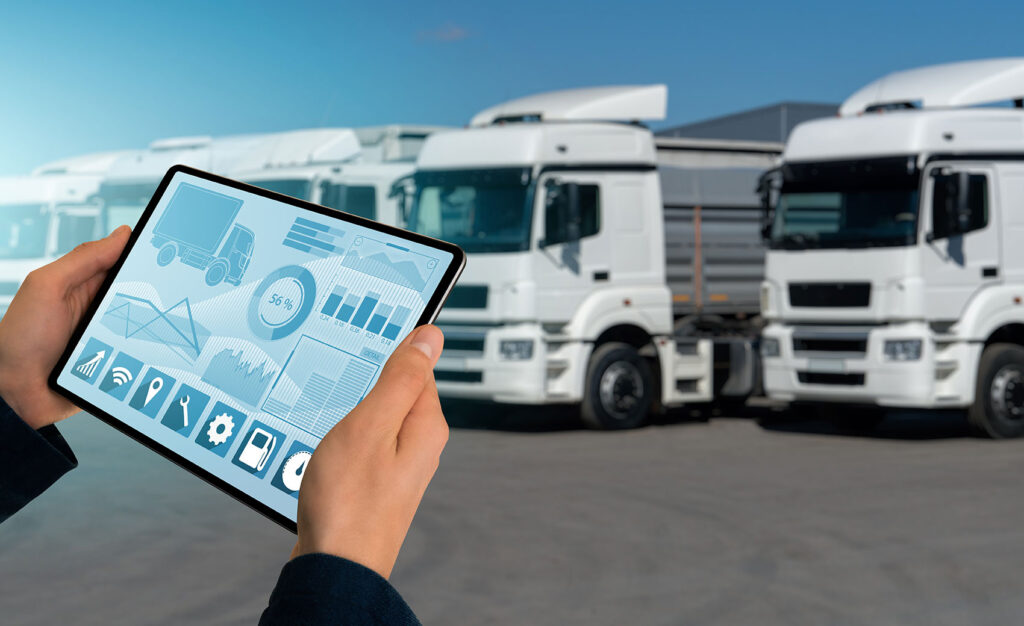Trucking Navigates the Digital Transformation Landscape
In the dynamic world of trucking, significant advancements in technology are reshaping how drivers find work and manage their operations. Veteran trucker Jared, who has spent over 20 years in the industry, has witnessed these changes firsthand. Now, not only does he transport musical gear for a country artist across North America, but he also juggles digital platforms to secure additional jobs.
Reflecting on his early career, Jared recalls the cumbersome methods of finding work. “Back then, you’d have to sit by a payphone and call contacts or rely on a pager,” he states from the driver’s seat of his large truck. Nowadays, he boasts about utilizing a multitude of devices—his laptop, tablet, and smartphones—to look for tasks with just a few clicks. “It makes everything much more efficient and provides near-instant payment,” he adds.
Uber Influence on the Trucking Industry
The evolution of technology in trucking has birthed ‘Uberised’ platforms, which connect truckers with freight companies needing transportation. While the conveniences offered by these applications are undeniable, Jared raises concerns about their impact on wages. “Average rates have significantly dropped from $3 per mile during the pandemic to around $1.10 for some routes now,” he notes, pointing to rising fuel prices as an additional challenge.
In Canada, a growing number of platforms, including Uber Freight, are attempting to digitize the trucking landscape. These applications target a fragmented market, where a staggering 85% of trucking companies employ fewer than five workers. Christopher Monette, representing Teamsters Canada, cautions against the risks associated with this gig economy approach. “Wages have stagnated over the last 25 years, and gig work may push them lower,” he warns. Monette emphasizes the need for stronger protections for drivers rather than just another mobile app.
Creating a Safer and More Efficient Industry
In response to these challenges, representatives from major digital platforms like Uber Freight have outlined features that aim to provide flexibility and transparency. A company spokesperson discussed their system’s capabilities, allowing carriers to choose loads based on their unique preferences and utilize AI for optimal route management.
In Canada, one notable success story is Freightera, founded by Eric Beckwitt in 2014. Enabling drivers to access an extensive network of routes, Freightera fosters a direct pricing approach where carriers determine their own rates based on profitability. “Before platforms like ours, finding reliable work felt like an impossible task,” Beckwitt explains. The company is now integrating AI technology to further streamline the booking process.
| Platform Name | Year Launched | Special Features |
|---|---|---|
| Uber Freight | 2017 | Real-time load matching |
| Freightera | 2014 | Carrier-set pricing |
| LORI | 2016 | Digitally managed freight |
Global Perspectives on Digital Freight
Globally, the adoption of digital trucking services is on the rise. In Kenya, where road freight dominates, platforms like LORI have revolutionized the transportation sector. Co-founder Jean-Claude Homawoo highlights their role in optimizing truck usage and reducing empty miles, which could lead to lower fuel consumption and decreased environmental impact.
While the current advancements gravitate towards enhanced productivity and efficiency, the potential emergence of autonomous trucks looms on the horizon. Companies are already testing driverless vehicles, presenting a future that could redefine job roles within the industry. However, as Jared asserts, reaching that stage remains a distant reality and is not anticipated to replace human drivers anytime soon.
As the trucking industry continues to traverse the uncertainties of technological innovation, it remains vital to strike a balance between leveraging new tools and ensuring fair work conditions for drivers.

